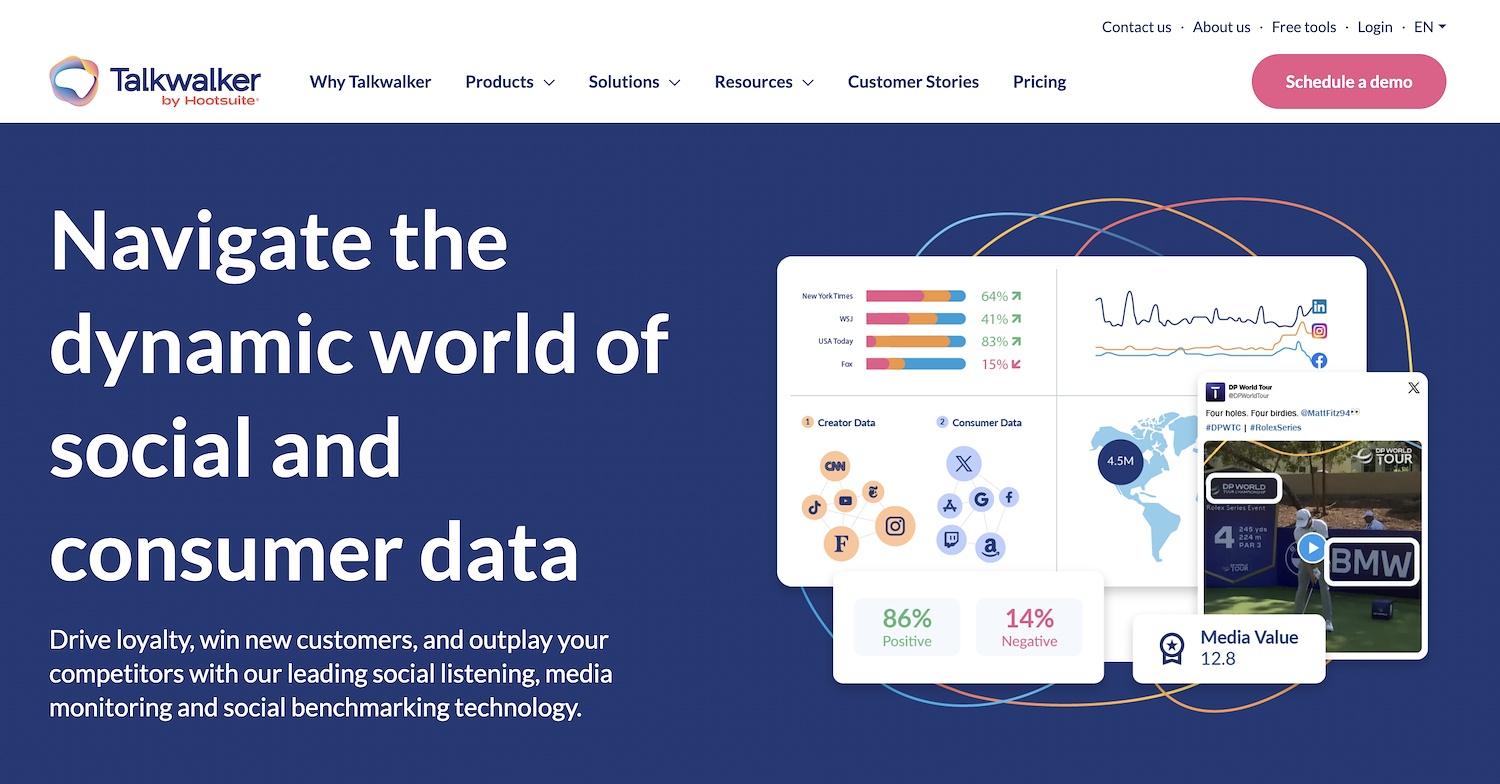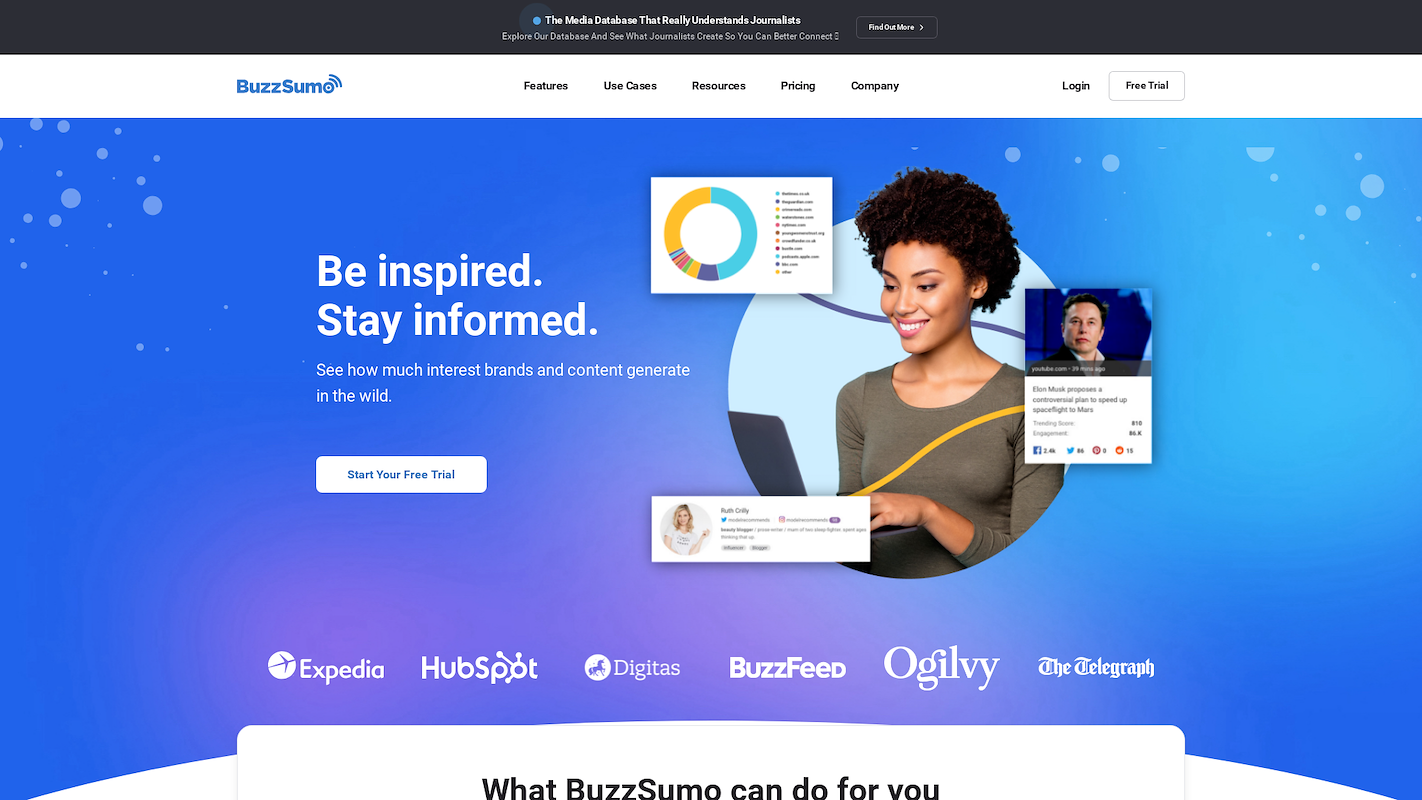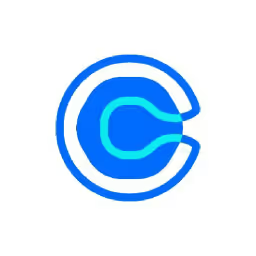TweetScraper Alternatives
Compare 10 alternatives to TweetScraper. This guide analyzes features, pricing, and performance to help you choose the right data collection tool.

TweetScraper is a popular choice for social selling and outreach. It performs well when you need to collect public data from Twitter for lead generation or market research.
However, the tool has limits. Some users say the setup can be technical, and it might hit Twitter's data caps. We analyzed the top alternatives and their trade-offs to help you shortlist the best options. Let's get started.
Consider 11x Digital Workers for Sales
If your team explores the use of digital workers for sales tasks, 11x offers autonomous agents for these functions. They can manage outreach and research activities and integrate into your existing sales processes. This is a relevant option to consider.
11x is a go-to-market platform that uses AI agents to manage sales functions autonomously. Its agent, Alice, identifies promising prospects, conducts outreach via email and LinkedIn, and maintains current CRM records. Another agent, Julian, qualifies inbound leads and schedules meetings.
The platform consolidates tools for data enrichment, outreach, and email warmup, removing the need for separate solutions.
TweetScraper Alternatives
Here is a detailed review of the top alternatives to TweetScraper. We will analyze each option's pricing, features, and specific trade-offs when compared to the original tool.
1) Brandwatch

Brandwatch is a social suite that unifies consumer intelligence and social media management. It uses AI for social listening and market research across a large archive of consumer opinion. This helps organizations understand audiences and find trends to inform outreach strategies.
The platform's tools manage social channels and customer support from one location. Its use cases include market research and content creation, which are relevant for social selling.
Brandwatch's Main Features
- Uses AI-powered social listening for market research across a large archive of consumer opinion to find real-time trends.
- Provides a unified social inbox, publishing calendar, and workflow management for cross-channel engagement.
- Manages influencer discovery, campaign execution, and performance tracking for partnerships.
- Monitors over 100 million sources in real time with smart alerts to detect brand threats and manage crises.
Brandwatch vs. TweetScraper: Key Differences
Average Review score: 4.4/5 stars based on 641 G2 reviews.
- Brandwatch monitors over 100 million online sources, offering a wider data pool for market research compared to TweetScraper's focus on Twitter.
- It provides built-in sentiment analysis to understand consumer feelings, a feature not available in TweetScraper, which collects raw data.
- The platform includes a unified social media management suite for publishing and engagement, unlike TweetScraper, which is a data collection tool.
- This tool offers customizable reports and dashboards for social analytics, a more advanced feature than the raw data output from TweetScraper.
- It also helps with influencer identification and campaign tracking, whereas TweetScraper does not have a function for managing influencer partnerships.
Brandwatch's Trade-Offs Compared to TweetScraper
- Brandwatch has a significant learning curve due to its many features. Some users say the initial setup can take up to two months, which is longer than for a specialized tool like TweetScraper.
- Its cost is higher as it is a full enterprise suite. The return on investment might take over a year, which is a key difference compared to a single-purpose tool like TweetScraper.
- The tool provides processed insights from many online sources. This is different from TweetScraper, which gives users raw, unfiltered data specifically from Twitter.
Pricing and Budget Considerations
Brandwatch provides pricing upon request, a common model for enterprise-level platforms. This differs from specialized tools that may offer fixed pricing tiers. For a custom quote, visit the official Brandwatch website.
2) Sprout Social

Sprout Social is an all-in-one social media management platform. It helps organizations use social channels for sales and outreach. The tool offers AI-powered workflows and integrates with tech stacks like Salesforce and major social networks.
The platform helps drive sales through social commerce and gather insights from social conversations. It also works to amplify brand awareness and personalize customer care with faster, tailored responses.
Sprout Social's Main Features
- Manages engagement with a unified smart inbox, automated routing, chatbots, and message prioritization.
- Plans, creates, and delivers social content and campaigns with integrated publishing tools.
- Discovers trends and provides sentiment insights from social conversations using listening tools.
- Identifies, builds, and manages influencer partnerships for marketing campaigns.
Sprout Social vs. TweetScraper: Key Differences
Average Review score: 4.4/5 stars based on 4,185 G2 reviews.
- Sprout Social includes a content calendar and publication tools to schedule posts across multiple social networks, a function not present in TweetScraper.
- It provides detailed analytics and customizable reports on post performance, which offers more insight than the raw data collection of TweetScraper.
- The platform has a shared inbox to manage customer messages from all channels in one place, a feature for active engagement that TweetScraper lacks.
- This tool offers sentiment analysis to understand audience feelings from social conversations, a layer of insight that TweetScraper does not provide.
- Its design supports team collaboration with shared workflows, unlike TweetScraper, which focuses on individual data extraction.
Sprout Social's Trade-Offs Compared to TweetScraper
- Sprout Social provides processed analytics rather than raw data. This is a limitation compared to TweetScraper for teams that need unfiltered information for custom data models.
- The platform has a higher cost, with plans that can be expensive for small teams. This is a key difference from TweetScraper, which is a specialized tool and likely more budget-friendly.
- Some users find its comprehensive feature set creates a learning curve. This is a trade-off compared to TweetScraper's singular focus, which might be faster to deploy for simple data collection tasks.
Pricing and Budget Considerations
Sprout Social’s pricing starts at $199 per user per month, billed annually. This reflects its position as a comprehensive management suite, making it a larger investment than a specialized data scraper like TweetScraper. For detailed plan information, visit Sprout Social's official website.
3) Hootsuite

Hootsuite is a social media management platform. It lets organizations plan, create, and publish content across major social networks from one dashboard. The tool helps monitor social channels and analyze performance.
It tracks mentions and keywords to follow brand health and competitor activity. An AI assistant provides insights from social trend data. The platform also consolidates customer service with a unified inbox for all networks.
Hootsuite's Main Features
- Manages content with a visual drag-and-drop calendar, bulk scheduling, and recommendations for the best time to post.
- Consolidates engagement with a unified inbox for comments and DMs, along with automated responses and team assignments.
- Includes an AI assistant, OwlyGPT, for content ideation and an AI writer for generating captions and scripts.
- Monitors social media channels for mentions and keywords and tracks performance with custom reports and competitor benchmarking.
Hootsuite vs. TweetScraper: Key Differences
Average Review score: 4.2/5 stars based on 6,242 G2 reviews.
- Hootsuite offers a content calendar to schedule posts across multiple social networks. This differs from TweetScraper, which focuses on data extraction and lacks publishing tools.
- The platform includes a unified inbox to manage customer messages from different social channels. This provides an engagement capability, whereas TweetScraper is designed for passive data collection.
- It provides detailed analytics and customizable reports on social media performance. This offers processed insights, in contrast to the raw data output from TweetScraper.
- This tool manages a wide range of social networks like Instagram and Facebook. This is a broader scope than TweetScraper's specific focus on collecting data from Twitter.
Hootsuite's Trade-Offs Compared to TweetScraper
- Hootsuite provides processed analytics, which is a limitation for teams that need raw data. For custom data models, TweetScraper's unfiltered output is more direct.
- The tool is a general social media suite, not a specialized scraper. Users who need to collect large volumes of data only from Twitter may find TweetScraper's focused approach more efficient.
- Some users find the platform complex due to its many features. This contrasts with TweetScraper's single-purpose design, which can be faster to deploy for simple data extraction tasks.
Pricing and Budget Considerations
Hootsuite's pricing starts at $99 per month. As a comprehensive suite, this represents a larger investment than TweetScraper, which is a specialized tool with a likely lower cost for its focused function. For detailed plan information, visit Hootsuite's official website.
4) Mention

Mention is a platform that tracks online conversations. It follows mentions of brands, competitors, and topics across the web and social channels in real time. This gives organizations a way to listen to their audience and analyze market sentiment.
The platform sends alerts for new mentions. This helps teams manage brand reputation and find opportunities for social selling.
Mention's Main Features
- Tracks any topic or brand across 1 billion web and social media sources in real time, with access to historical data up to two years.
- Analyzes online conversations using auto-updating dashboards and customizable reports to visualize metrics like reach, sentiment, and share of voice.
- Manages social media from a unified inbox for publishing and scheduling content, with AI-powered tools for content creation.
Mention vs. TweetScraper: Key Differences
Average Review score: 4.3/5 stars based on 440 G2 reviews.
- Mention monitors over one billion online sources, including news sites and forums. This provides a wider view of conversations compared to TweetScraper's focus on Twitter data.
- It sends real-time alerts for new brand mentions. This allows for immediate responses, a feature not available in TweetScraper, which collects data in batches.
- The platform includes social publishing tools to schedule and post content. This is a management function that TweetScraper, as a data extraction tool, does not offer.
- This tool generates custom reports and analyzes metrics like sentiment. This offers processed insights, unlike TweetScraper, which provides raw, unfiltered data.
Mention's Trade-Offs Compared to TweetScraper
- Mention provides processed analytics from its sources. This is a limitation for teams that need raw, unfiltered data for custom analysis, which TweetScraper provides directly from Twitter.
- The tool monitors many online sources, not just Twitter. For users who only need to collect large volumes of data from Twitter, TweetScraper's specialized focus might be more direct.
- Some users note that Mention has limits on historical data access before an alert is set up. This can be a drawback compared to a scraper like TweetScraper, which may offer more flexibility for historical data collection.
Pricing and Budget Considerations
Mention's pricing starts at $83 per month. This is a higher investment than a specialized tool like TweetScraper, which has a more focused function and likely a lower cost. For detailed plan information, visit Mention's official website.
5) Brand24

Brand24 is a media watch tool that gives access to online mentions of predefined keywords. It follows conversations about brands and products across social media, news sites, blogs, and forums. This helps companies find sales prospects and protect their online reputation.
The platform identifies public discussions in real time. This function supports social sales efforts and helps teams engage with potential customers at the right moment.
Brand24's Main Features
- Monitors over 25 million online sources in real time, including social networks, news sites, blogs, and podcasts.
- Provides advanced sentiment analysis that classifies mentions as positive, negative, or neutral and includes sarcasm detection.
- Uses AI to generate insights such as influencer scores, reputation scores, and word clouds from online conversations.
- Creates automated and customizable PDF reports to track PR coverage and marketing performance.
Brand24 vs. TweetScraper: Key Differences
Average Review score: 4.6/5 stars based on 298 G2 reviews.
- Brand24 monitors over 25 million online sources, including news sites and blogs. This offers a wider data scope compared to TweetScraper's focus on Twitter.
- It provides sentiment analysis to classify mentions as positive or negative. This is a layer of insight that TweetScraper does not offer with its raw data output.
- The tool uses AI to generate insights like influencer scores from online conversations. This is different from TweetScraper, which collects data without this type of analysis.
- This platform creates automated PDF reports to track marketing performance. This is a more processed output than the raw data files from TweetScraper.
Brand24's Trade-Offs Compared to TweetScraper
- Brand24 offers data within a structured platform. This provides less flexibility than TweetScraper, which allows developers to customize the scraping script and define the exact output format for their specific needs.
- It requires careful keyword setup to avoid irrelevant mentions from its wide pool of sources. Some users note a learning curve in fine-tuning projects, a different challenge from the technical setup of TweetScraper.
- The platform has some limits on data export, as it does not offer a consolidated export for multiple projects. This is different from TweetScraper, which gives users direct access to raw data files.
Pricing and Budget Considerations
Brand24's pricing starts at $199 per month. As a comprehensive media monitoring suite, this represents a larger investment than TweetScraper, which is a specialized tool with a likely lower cost. For detailed plan information, visit the official Brand24 website.
Consider 11x for Sales Automation
While the tools above focus on social media management, 11x offers a different approach. It provides autonomous AI agents that execute sales tasks like prospecting and outreach, integrating directly into your workflows.
For teams that want to automate go-to-market functions, 11x is a relevant option. You can find more details on how its digital workers operate on the 11x website.
At 11x, we use AI to manage your sales process. Our agent Alice finds accounts and starts outreach. Julian qualifies leads and sets up meetings. The platform combines tools for data enrichment and email warmup, so you do not need separate solutions.
Book a demo to see 11x in action.
6) Talkwalker

Talkwalker is a consumer intelligence platform that monitors conversations across social media and other online sources. It combines this data with an analytics suite to help organizations find consumer insights, manage brand reputation, and inform outreach strategies for social sales.
Talkwalker's Main Features
- Compares performance against competitors and industry standards.
- Analyzes reviews, ratings, and survey data to find product and customer experience insights.
- Provides deep dives into audience demographics, interests, and behaviors.
- Uses a purpose-built generative AI engine for consumer intelligence and natural language analysis.
Talkwalker vs. TweetScraper: Key Differences
Average Review score: 4.3/5 stars based on 133 G2 reviews.
- Talkwalker monitors over 30 social networks and 150 million websites, offering a wider data pool than TweetScraper's focus on Twitter.
- It provides sentiment analysis to classify consumer feelings, an analytical feature not available in TweetScraper, which collects raw data.
- The platform uses an AI engine to generate insights and categorize data, unlike TweetScraper, which provides unfiltered data without this analysis.
- This tool offers customizable reports and dashboards for social analytics, a more advanced feature than the raw data files from TweetScraper.
- Talkwalker includes features for competitor analysis and benchmarking, whereas TweetScraper does not have a dedicated function for this type of comparison.
Talkwalker's Trade-Offs Compared to TweetScraper
- Talkwalker provides processed analytics, which is a limitation for teams that need raw data for custom models. TweetScraper, in contrast, gives users direct access to unfiltered data files.
- Some users say the platform has a steep learning curve due to its many features. This is a trade-off compared to TweetScraper's focused function, which can be faster to deploy for simple data collection.
- The tool may limit historical data searches on certain plans. This can be a drawback for projects that require extensive backfilled data, which a scraper like TweetScraper can often collect.
Pricing and Budget Considerations
Talkwalker provides pricing upon request, a common model for enterprise-level platforms. This approach differs from a specialized tool like TweetScraper, which likely has a lower cost. For a custom quote, visit the official Talkwalker website.
7) Meltwater

Meltwater is a media intelligence suite that provides tools to monitor online and social media conversations. Organizations use the platform to track brand mentions and analyze market trends. This information can support social sales outreach by the discovery of relevant discussions across social media, blogs, and news sites.
Meltwater's Main Features
- Monitors news and online coverage to track brand, competitor, and industry topics.
- Searches a global journalist database and distributes press releases to key reporters.
- Listens to conversations to find trends and benchmark sentiment across social channels.
- Enriches CRM data and surfaces buying signals to accelerate revenue.
Meltwater vs. TweetScraper: Key Differences
Average Review score: 4.0/5 stars based on 2,297 G2 reviews.
- Meltwater monitors a wide range of sources, including news sites, blogs, and print media. This provides a broader data set than TweetScraper, which focuses only on Twitter.
- It includes a global database to find journalists and influencers for outreach. TweetScraper collects public data but does not have a comparable feature for media relations.
- The platform enriches CRM data with buying signals from online conversations. This is a sales intelligence function that TweetScraper does not perform.
- This tool provides interactive dashboards and custom reports for analysis. This is different from TweetScraper, which outputs raw, unstructured data files.
Meltwater's Trade-Offs Compared to TweetScraper
- Meltwater is a complex suite, and some users report a steep learning curve. This is different from TweetScraper's single-purpose design, which allows for faster deployment for simple data extraction tasks.
- The platform provides processed analytics, which is a limitation for teams that need raw data. TweetScraper gives users direct access to unfiltered data files for custom models.
- Its broad search function sometimes requires complex setup to filter out irrelevant mentions. This is a trade-off compared to TweetScraper, which focuses only on Twitter and may provide more targeted results from that source.
Pricing and Budget Considerations
Meltwater provides pricing upon request, a common model for enterprise-level platforms. This represents a larger investment than a specialized tool like TweetScraper, which has a more focused function and likely a lower cost. For a custom quote, visit the official Meltwater website.
8) BuzzSumo

BuzzSumo is a content marketing platform that helps discover popular content and identify authors with high social engagement. This information supports social selling and outreach efforts because it reveals what topics and formats get attention. The tool is useful for teams that need to find relevant conversations and key voices for their industry.
BuzzSumo's Main Features
- Discovers popular content and key influencers for any topic or website.
- Analyzes content performance and benchmarks against competitors using reports and dashboards.
- Generates content suggestions and curates content from various online sources.
BuzzSumo vs. TweetScraper: Key Differences
Average Review score: 4.5/5 stars based on 105 G2 reviews.
- BuzzSumo finds popular content across multiple social networks like Facebook and Reddit. This is different from TweetScraper, which only collects data from Twitter.
- It helps find key influencers for any topic. This provides a list of relevant people for outreach, a feature not available in TweetScraper's raw data output.
- The tool analyzes content performance and benchmarks it against competitors. This is a more advanced function compared to TweetScraper, which provides data without this comparative analysis.
- This platform offers content suggestions based on performance data. This helps with topic ideation, a feature that TweetScraper does not have as a data collection tool.
BuzzSumo's Trade-Offs Compared to TweetScraper
- BuzzSumo provides analyzed content insights through its dashboard. This is different from TweetScraper, which outputs raw data files that offer more flexibility for developers who need to build custom data models.
- The tool's broad search across many platforms may sometimes provide less depth on niche topics. For users who need very specific data only from Twitter, TweetScraper's focused script can yield more granular results.
- Some users note a bias toward English-language trends in BuzzSumo's results. A custom tool like TweetScraper collects data in any language directly from Twitter without this type of platform-level filtering.
Pricing and Budget Considerations
BuzzSumo's pricing starts at $199 per month. This represents a larger investment than a specialized tool like TweetScraper, which likely has a lower cost. For detailed plan information, visit the official BuzzSumo website.
9) Awario

Awario is a tool that monitors social media. It gives you access to mentions of your brand, competitors, or any keyword across the web. The platform finds conversations in real time.
For social selling, it locates people who seek a product like yours. This function helps teams find leads from online discussions, including those on Twitter, and engage potential customers.
Awario's Main Features
- Monitors brand mentions and keywords across social media and the web.
- Identifies influencers to support outreach and marketing campaigns.
- Analyzes the sentiment of online conversations to classify mentions.
- Generates social reports and provides daily email updates on mentions.
Awario vs. TweetScraper: Key Differences
Average Review score: 4.0/5 stars based on 41 G2 reviews.
- Awario tracks keywords across social media and the web. This provides a broader view of conversations compared to TweetScraper, which collects data only from Twitter.
- The tool analyzes the sentiment of online conversations to classify mentions. This offers a layer of insight not present in TweetScraper's raw data output.
- It identifies influencers to support outreach and marketing campaigns, a specific function that TweetScraper does not offer with its general data collection.
- This platform generates social media reports and provides daily email updates. This is different from TweetScraper, which provides raw data files that require manual analysis.
Awario's Trade-Offs Compared to TweetScraper
- Awario provides processed analytics through its dashboard. This is different from TweetScraper, which gives users direct access to raw data files for custom analysis.
- The tool offers less flexibility for developers. Compared to TweetScraper, users cannot customize the collection script to define a specific output format for their data models.
- Its broad search across many platforms sometimes returns irrelevant results, according to some users. For teams that need deep data only from Twitter, TweetScraper's focused approach can be more direct.
- Some users say the platform's API could be more developed. This might be a limitation for teams that need advanced programmatic data access, which a custom script like TweetScraper can offer.
Pricing and Budget Considerations
Awario’s pricing starts at $39 per month, a clear entry point for a monitoring suite, whereas TweetScraper is a specialized tool with a likely lower but less defined cost. For detailed plan information, visit Awario's official website.
10) Keyhole

Keyhole is a social media analytics platform that offers real-time conversation analysis. It monitors hashtags and keywords across social channels to support social sales and outreach. The tool provides data on campaign performance and audience response. This information helps organizations identify market trends and sales opportunities.
Keyhole's Main Features
- Tracks hashtags and keywords in real time to monitor campaigns and brand mentions.
- Identifies and analyzes influencers with dedicated metrics, including filters for geo-location and keywords.
- Provides social analytics with a word cloud that shows hashtags commonly used with a primary hashtag.
- Builds and shares reports instantly from a dashboard for social measurement and performance tracking.
Keyhole vs. TweetScraper: Key Differences
Average Review score: 4.3/5 stars based on 69 G2 reviews.
- Keyhole identifies influencers with dedicated metrics and filters for location. This offers a targeted function for outreach, unlike TweetScraper, which requires manual analysis of raw data to find similar contacts.
- The platform provides real-time analytics and instant reports from a dashboard. This is different from TweetScraper, which outputs raw data files that require manual analysis.
- It includes sentiment analysis to classify conversations automatically. TweetScraper collects data without this layer of insight, so users must perform the analysis themselves.
- This tool offers a word cloud to visualize popular related hashtags. This provides a quick visual summary, whereas TweetScraper's output is raw text that needs separate tools for visualization.
Keyhole's Trade-Offs Compared to TweetScraper
- Keyhole offers processed analytics within its dashboard. This is different from TweetScraper, which provides raw data files that developers can use for custom data models.
- The tool offers less flexibility for developers. Users cannot customize the collection script to define a specific output format, which is a core feature of TweetScraper.
- Some users report occasional data accuracy issues. This might happen with platform-level analytics, while a direct scraper like TweetScraper pulls data without this layer of processing.
Pricing and Budget Considerations
Keyhole provides custom pricing upon request, which is common for platforms with enterprise features. This represents a larger investment than a specialized tool like TweetScraper. For detailed plan information, visit Keyhole's official website.
Which One Should You Go With?
Choosing a TweetScraper alternative depends on your specific needs, from data scope to budget. This guide analyzed the top options and their trade-offs to help you find the right fit for your organization.
If your goal is to automate sales functions rather than just monitor social media, 11x offers a different approach. Its autonomous AI agents handle tasks like prospecting and outreach, integrating directly into your go-to-market workflows to support your sales team.




